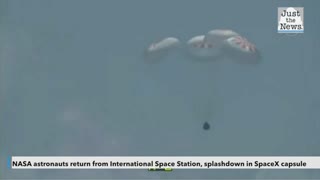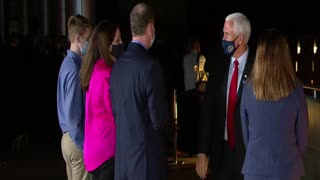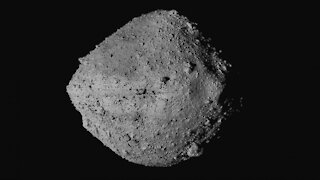Premium Only Content

Here's How NASA Keeps Astronauts From Drifting Into Space
There is that one particularly iconic photo of a free floating astronaut in space. It is a real photo of a real Nasa astronaut.
Bruce McCandles II was floating free through space on February 7th, 1984, more than 300 feet away from Challenger space shuttle. He was the first person to spacewalk untethered, wearing only a jetpack, or a Manned Maneuvering Unit. These units were used to retrieve faulty communication satellites.
Today, no astronaut goes on a spacewalk without a tether to his shuttle, for obvious safety reasons. The tether is a braided steel rope, which has a tensile strength of 1,100 pounds. They also wear a SAFER (Simplified Aid For EVA Rescue) backpack. The SAFER has a built-in nitrogen-jet small joystick, there in case the tether breaks for any reason, to propel them back to the International Space Station.
But, if that fails, saving an astronaut from drifting further into space will require several tethers hooked together, a SAFER backpack and some good, old fashioned luck.
Such a thing has never happened and NASA is confident it never will. But there is always a darker scenario, like what if the spacewalker gets a boink of the head, falls unconscious and cannot operate his SAFER? "A rescue effort could and would be undertaken by the second spacewalker and/or other members of the space station crew," says Michael Curie, a spokesman for NASA's space operations. He wouldn't speculate on the exact steps a rescue team would take, because they would depend on the circumstances. But he adds, "we are really happy with the tether-and-Safer approach."
Still, we wouldn’t be going on any space strolls anytime soon.
-
 1:41
1:41
WFTS
4 years agoNASA & SpaceX complete Crew-1 mission sending 4 astronauts into space
1.21K5 -
 2:23
2:23
Tallsbrat
4 years agoSpaceX Astronauts taking off from Kennedy Space Center
87 -
 0:48
0:48
Just the News
4 years agoNASA astronauts return from International Space Station, splashdown in SpaceX capsule
8.89K -
 4:39
4:39
IOL-IndependentOnline
4 years ago $0.03 earned'One heck of a ride': SpaceX launches astronauts into space
92 -
 0:31
0:31
KTNV
4 years agoAstronauts dock at International Space Station
2.84K9 -
 1:14
1:14
TimeIsNow
4 years agoNASA View From Space
298 -
 0:53
0:53
Newsy
4 years agoNASA Says Samples Collected From Asteroid Are Leaking Into Space
10.2K29 -
 2:55
2:55
WPTV
4 years agoSpaceX capsule with 4 astronauts reaches space station
1.05K1 -
 1:03
1:03
Digital Trends
4 years agoAstronauts land after 6 months in space
120 -
 0:20
0:20
ViralHog
4 years ago $0.29 earnedDrifting Car Overcorrects into Ditch
696